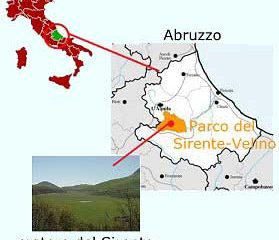
Thanks to the cochlear implant deaf children under two years old can express and understand properly the language. Those are the results obtained by the University Clinic of the University of Navarre.
The University Clinic of Navarre is a pioneer in cochlear implant. This technique replaces the ear with a system that stimulates the hearing nerve electrically.
The programme of cochlear implant started in 1989 and one year later was done the first implant. This first implant was mad

The Basque company Contec, specialised in connectivity and security tasks in Internet accesses, has just presented a range of VPN e-Link solutions.
e-Link solutions provide several capacities of connectivity, security and interconnection between the head offices of one or more companies. These solutions guarantee the possibility to keep connected all head offices, representative offices or stores located in different geographical places of a company. That way, they can share all resources a

In the Prati del Sirente plain in the heart of the Abruzzo mountains, a small circular lake is clearly visible. A prominent ridge encircles the lake. The peculiar appearance of the lake drew the attention of this papers first author (Jens Ormö) when working in Pescara between 1999 and 2002. Jens did at that time a European Union Marie Curie post-doc as an impact geologist at the International Research School of Planetary Sciences (IRSPS), Universita d’Annunzio. After the years of research that follo

A new study of snow accumulation on Canada’s highest mountain provides strong evidence that significant climate change has occurred in Western Canada over the past 150 years.
The study, which will appear in the Nov. 28th issue of Nature, examines climate change over the past 300 years and provides evidence that both surface and atmospheric temperatures have risen in Western Canada since the middle of the 19th century. Led by University of Toronto physicist, Professor Kent Moore, the

Researchers at Leeds have identified the gene which gives us bigger brains – the evolutionary attribute separating us from other animals. The gene came to light during a study by Geoff Woods, Jacquie Bond and Emma Roberts into the disease microcephaly, in which people are born with a smaller brain (and head).
Dr Woods, a clinical geneticist at St James’’s, noticed a high instance of microcephaly among his Pakistani patients. He found that, in the 1960s, a dam project in Pakistani-c

Representatives from 14 international, national, and regional organisations from around the world meeting in Brazil have agreed to form a World Federation of Science Journalists, recognizing the increasing international nature of science communication.
The new organization is designed to bridge scientists and society worldwide by creating a network for the exchange of information, improving access to scientific and technical sources and facilitating training and education of journalists par

– new calculation confirms standard model of particle physics. Contribution of hadronic vacuum polarization determined with unprecedented accuracy. The magnetic moment of the muon is an important precision parameter for…
Technique may prevent formation of unwanted waves that siphon off needed energy. Heating plasma to the ultra-high temperatures needed for fusion reactions requires more than turning the dial on a…

An international team of astronomers, led by researchers from the Astronomical Observatory of the University of Warsaw, have identified a new class of cosmic X-ray sources. The findings have been…

Antibody that Neutralizes Inhibitory Factors Involved in Nerve Regeneration Leads to Enhanced Motor Function after Acute Spinal Cord Injury. Researchers at 13 clinics in Germany, Switzerland, the Czech Republic and…

How the body’s natural killer cells could fight leukemia. Every year, some 13,000 people in Germany are diagnosed with leukemia. Despite intensive chemotherapy, around one in two of them die….

… eco-friendly reactor converts air and water into ammonia. Producing enough ammonia to feed the world comes with a large carbon footprint;. process described in new UB-led study could help…

How simulations help manufacturing of modern displays. Modern materials must be recyclable and sustainable. Consumer electronics is no exception, with organic light-emitting diodes (OLEDs) taking over modern televisions and portable…

“Neurons that fire together, wire together” describes the neural plasticity seen in human brains, but neurons grown in a dish don’t seem to follow these rules. Neurons that are cultured…

The quest for sustainable energy solutions has been a major focus of scientific research for decades. Solar energy, a clean and renewable source, has emerged as a promising alternative to…

With a processing speed a billion times faster than nature, chip-based laser neuron could help advance AI tasks such as pattern recognition and sequence prediction. Researchers have developed a laser-based…

New technology could remotely identify various types of plastics, offering a valuable tool for future monitoring and analysis of oceanic plastic pollution. Researchers have developed a new hyperspectral Raman imaging…

Artificial Intelligence (AI) has established a strong presence across industries, large and small. The “VoBaKI” research project has empowered small and medium-sized enterprises (SMEs) with an innovative tool to independently…